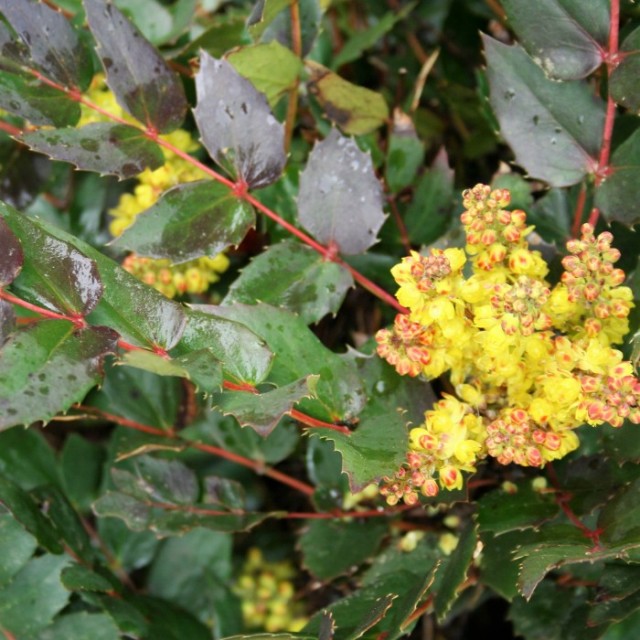COMMON NAME
Cascade barberry
SCIENTIFIC NAME
Berberis nervosa
ALSO KNOWN AS
Mahonia nervosa, Cascade Oregon grape, dwarf Oregon-grape, dull Oregon grape
Plant family
Barberry (Berberidaceae)
Plant group
Broadleaf Evergreens
Cascade barberry is a flowering evergreen shrub, native to the Northwest coast of North America, and usually growing to just 2 feet tall.
147 reports
32+
OBSERVERS
147+
OBSERVATIONS
Identification hints
Cascade barberry looks very similar to Oregon grape (Berberis aquifolium), however the leaflets of Cascade barberry does not have a central vein, instead multiple veins originate at the base of the leaf (palmate venation). Cascade barberry is also shorter in stature than Oregon grape, and the leaflets are typically fewer and less shiny,
Did you know?
This plant was first collected by the Lewis and Clark expedition in 1813.
DISTRIBUTION IN TH U.S.
California
,
Idaho
,
Montana
,
Oregon
,
South Carolina
,
Washington
HABITAT
Cascade barberry is found in wet coniferous forests in valleys.
ATTRIBUTES
Leaves
Leaves of Cascade barberry are up to one foot long, and they are composed of several leaflets (compound leaves). The leaflets have no leaf stalks (sessile), they have spiny toothed leaf margins, and are somewhat shiny above and below. The multiple leaflet nerves originate at the base of the leaflet (palmate leaf venation). The foliage often turns reddish or purplish in the fall.
Flowers
Yellow flowers are borne in dense, 2-3" long clusters.
Fruits
Ripe fruits are dark dusty blue berries that resemble grapes
Bloom Time
Blooms in early springtime.
See Menu
- 2021 Chicago Botanic Garden. All Rights Reserved.
-
Creative Commons
BY-NC-SA 4.0 - Terms of Use
- Privacy Policy
- Data Sharing and Citation Policies
- 2021 Chicago Botanic Garden. All Rights Reserved.



